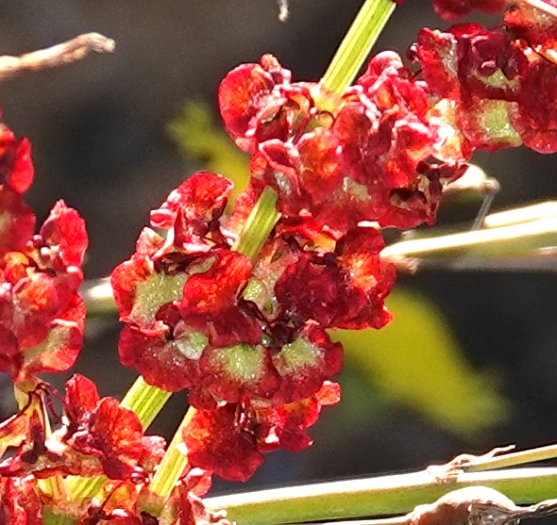Heart-Leaved Dock
(Rumex cordatus)
Heart-Leaved Dock (Rumex cordatus)
/
/

© desertnaturalist
CC BY 4.0
Image By:
© desertnaturalist
Recorded By:
Copyright:
CC BY 4.0
Copyright Notice:
Photo by: © desertnaturalist | License Type: CC BY 4.0 | License URL: http://creativecommons.org/licenses/by/4.0/ | Uploader: desertnaturalist | Publisher: iNaturalist |

























Estimated Native Range
Climate Requirements for Amagasaki, Japan
| This Plant | Your Site | Plant Suitability for Your Location | ||
|---|---|---|---|---|
| • Precipitation | 1" - 35" | 54" | Aquatic | Aquatic |
| • High Temp. | 71°F - 94°F | 91°F | Your summer temperatures are normal for this plant. | Excellent |
| • Low Temp. | 28°F - 51°F | 34°F | Your winter temperatures are normal for this plant | Excellent |
This plant may not grow well at your location - your precipitation is too high.
Summary
Rumex cordatus, commonly known as Heart-Leaved Dock or Himalayan Dock, is a perennial herb native to the Cape regions of South Africa. It is typically found in moist meadows, forest openings, and along stream banks, often in clay soils. This species grows at a moderate rate to a height of 2-3 feet (0.6-0.9 meters) and a width of 1.5-2 feet (0.5-0.6 meters). It features heart-shaped leaves and green, inconspicuous flowers that bloom in the summer. The flowers are not particularly showy, but they do produce winged fruits that add interest later in the season.
Heart-Leaved Dock is valued for its foliage rather than its flowers, with the heart-shaped leaves being the main ornamental feature. It is used in naturalistic plantings, as a border plant, or in wildlife gardens, where its foliage can provide contrast to other plants. It thrives in full sun to part shade and prefers medium or slow-draining loam or clay soils. While it requires medium amounts of water, it can tolerate periods of dryness once established. Gardeners should be cautious, as Rumex cordatus can become potentially invasive outside its native range, spreading by seed and root fragments. It is important to manage its spread to prevent it from becoming a problem in non-native ecosystems.CC BY-SA 4.0
Heart-Leaved Dock is valued for its foliage rather than its flowers, with the heart-shaped leaves being the main ornamental feature. It is used in naturalistic plantings, as a border plant, or in wildlife gardens, where its foliage can provide contrast to other plants. It thrives in full sun to part shade and prefers medium or slow-draining loam or clay soils. While it requires medium amounts of water, it can tolerate periods of dryness once established. Gardeners should be cautious, as Rumex cordatus can become potentially invasive outside its native range, spreading by seed and root fragments. It is important to manage its spread to prevent it from becoming a problem in non-native ecosystems.CC BY-SA 4.0
Plant Description
- Plant Type:
- Height: 2-3 feet
- Width: 1.5-2 feet
- Growth Rate: Moderate
- Flower Color: Green
- Flowering Season: Summer
- Leaf Retention: Deciduous
Growth Requirements
- Sun: Full Sun, Part Shade
- Water: Medium
- Drainage: Medium, Slow
Common Uses
Border Plant, Low Maintenance, Water Garden
Natural Habitat
Moist meadows, forest openings, and along stream banks
Other Names
Common Names: Himalayan Dock
Scientific Names: Rumex cordatus , Acetosa cordata , Rumex cordatus , Rumex sarcorhizus , Rumex scutatus , Rumex tuberosus
GBIF Accepted Name: Rumex cordatus